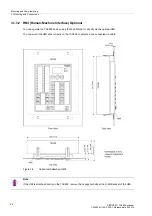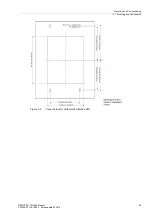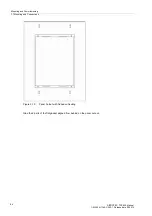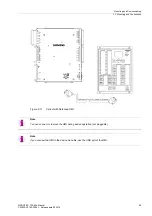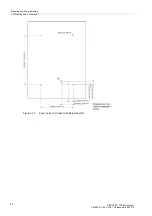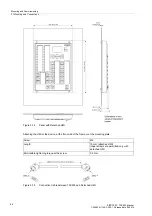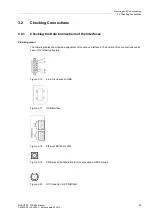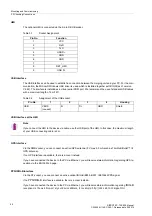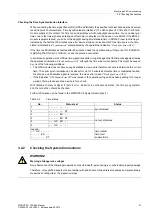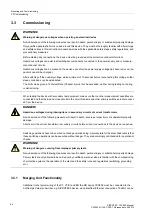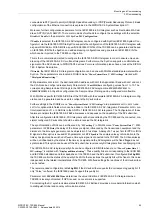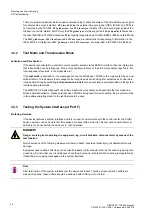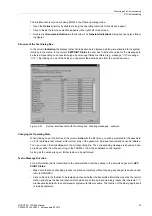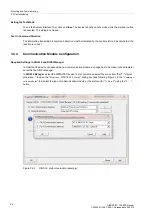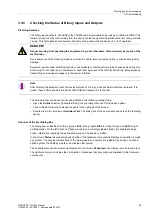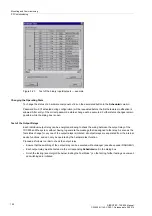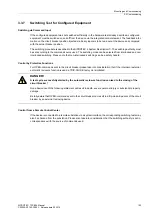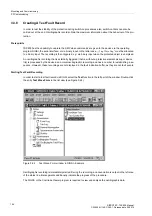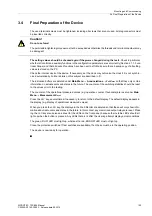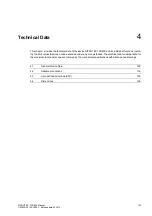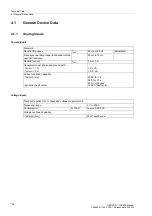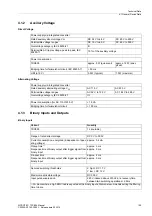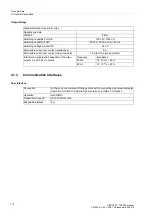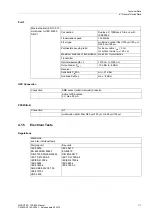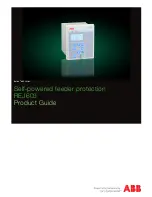
Mounting and Commissioning
3.3 Commissioning
SIPROTEC, 7SC805, Manual
C53000-G1140-C380-1, Release date 05.2014
96
There are several indications which support commissioning to check the status of the external time sync signal
for sample value synchronization.
PPS lost
indicates the external time sync signal (GPS, IRIG-B, and PPS) is
not received by the 7SC805.
PPS global sync
. and
PPS local sync
. indicate if the time sync signal includes the
Global or Local information. At GPS only the
PPS global sync
. will be supported.
PPS bad quality
is
True
under
the case that IRIG-B TFOM indicates insufficient quality (supported only for IRIG-B B004 / B005 and IEEE1344)
The
SMV global sync.
,
SMV local sync.
and
SMV not sync
. are indications corresponding to information in the
IEC61850-9-2 SV-telegram.
SMV global sync.
and
SMV local sync.
are supported in IEC61850-9-2 Edition 2.
3.3.2
Test Mode and Transmission Block
Activation and Deactivation
If the device is connected to a central or main computer system via the SCADA interface, then the information
that is transmitted can be influenced. This is only possible with some of the protocols available (see Table “Pro-
tocol-dependent functions” in the Appendix A.6).
If the
test mode
is switched on, the messages sent by the MU device 7SC805 to the main system has an ad-
ditional test bit. This bit allows the messages to be recognized as not resulting from actual faults. Furthermore,
it can be determined by activating the
transmission block
that no annunciations are transmitted via the system
interface during test mode.
The SIPROTEC 4 System Manual/1/ describes in detail how to activate and deactivate the test mode and
blocked data transmission. Please note that when DIGSI is being used for device editing, the program must be
in the
online
operating mode for the test features to be used.
3.3.3
Testing the System Interface (at Port F)
Prefacing Remarks
If the device features a system interface and this is used to communicate with the control center, the DIGSI
device operation can be used to test if messages are transmitted correctly. This test option should however
definitely not be used while the device is in “real” operation.
DANGER!
Danger evolving from operating the equipment (e.g. circuit breakers, disconnectors) by means of the
test function
Non-observance of the following measure will result in death, severe personal injury or substantial property
damage.
Equipment used to allow switching such as circuit breakers or disconnectors is to be checked only during com-
missioning. Do not under any circumstances check them by means of the test function during real operation by
transmitting or receiving messages via the system interface.
Note
After termination of the system interface test the device will reboot. Thereby, all annunciation buffers are
erased. If required, these buffers should be extracted with DIGSI prior to the test.

